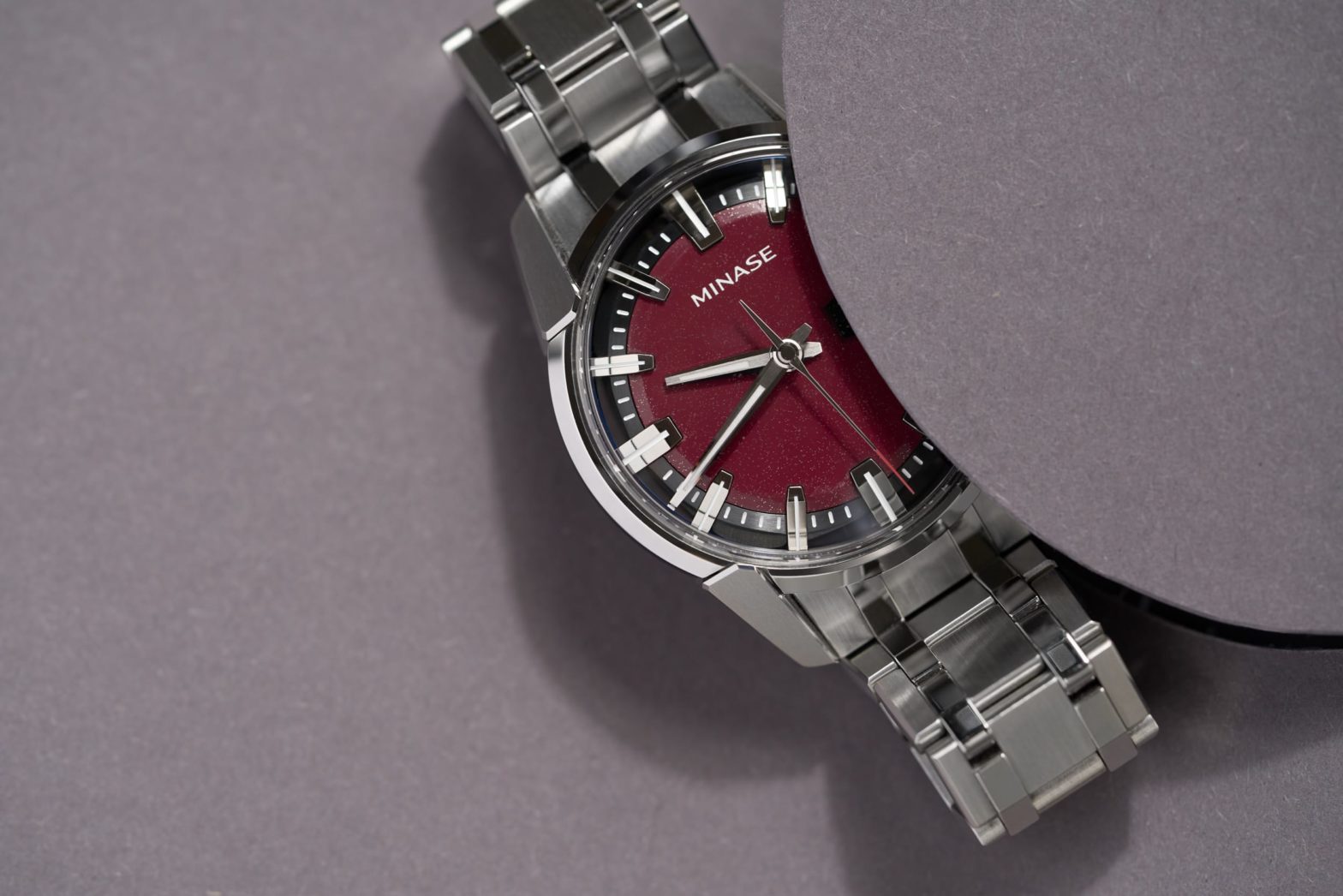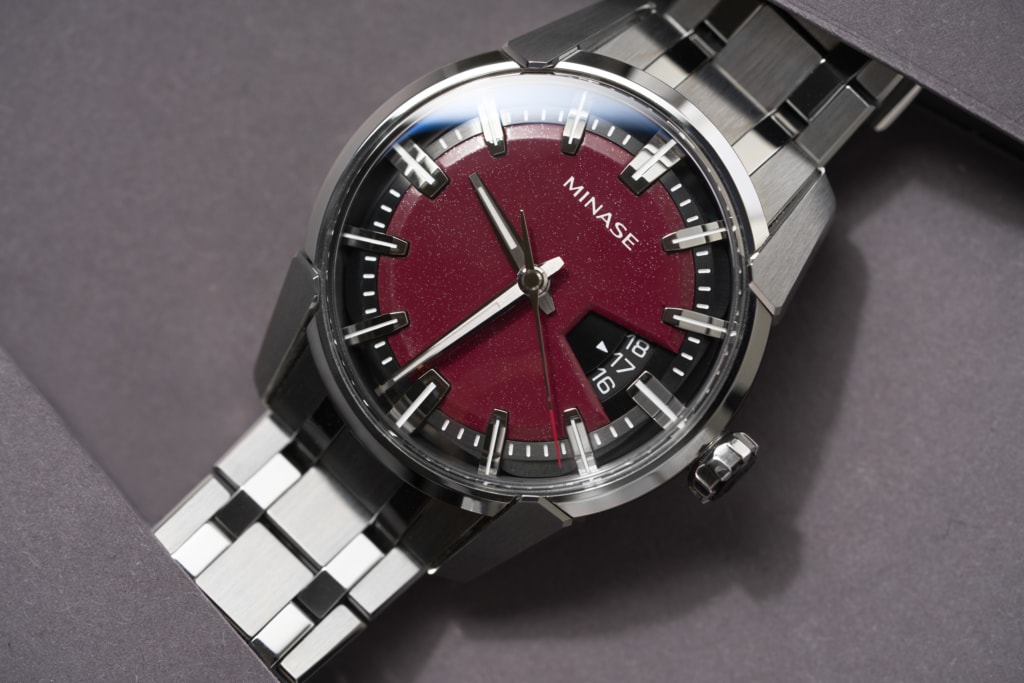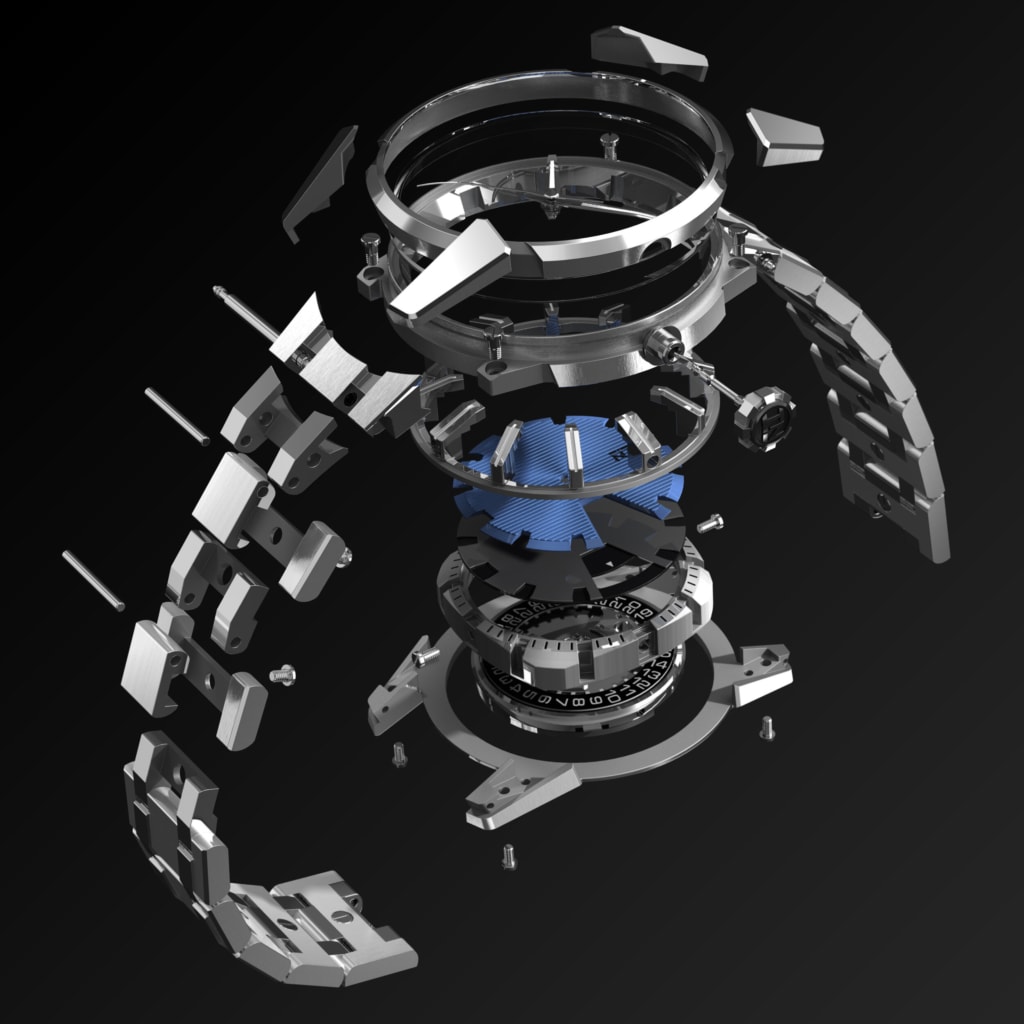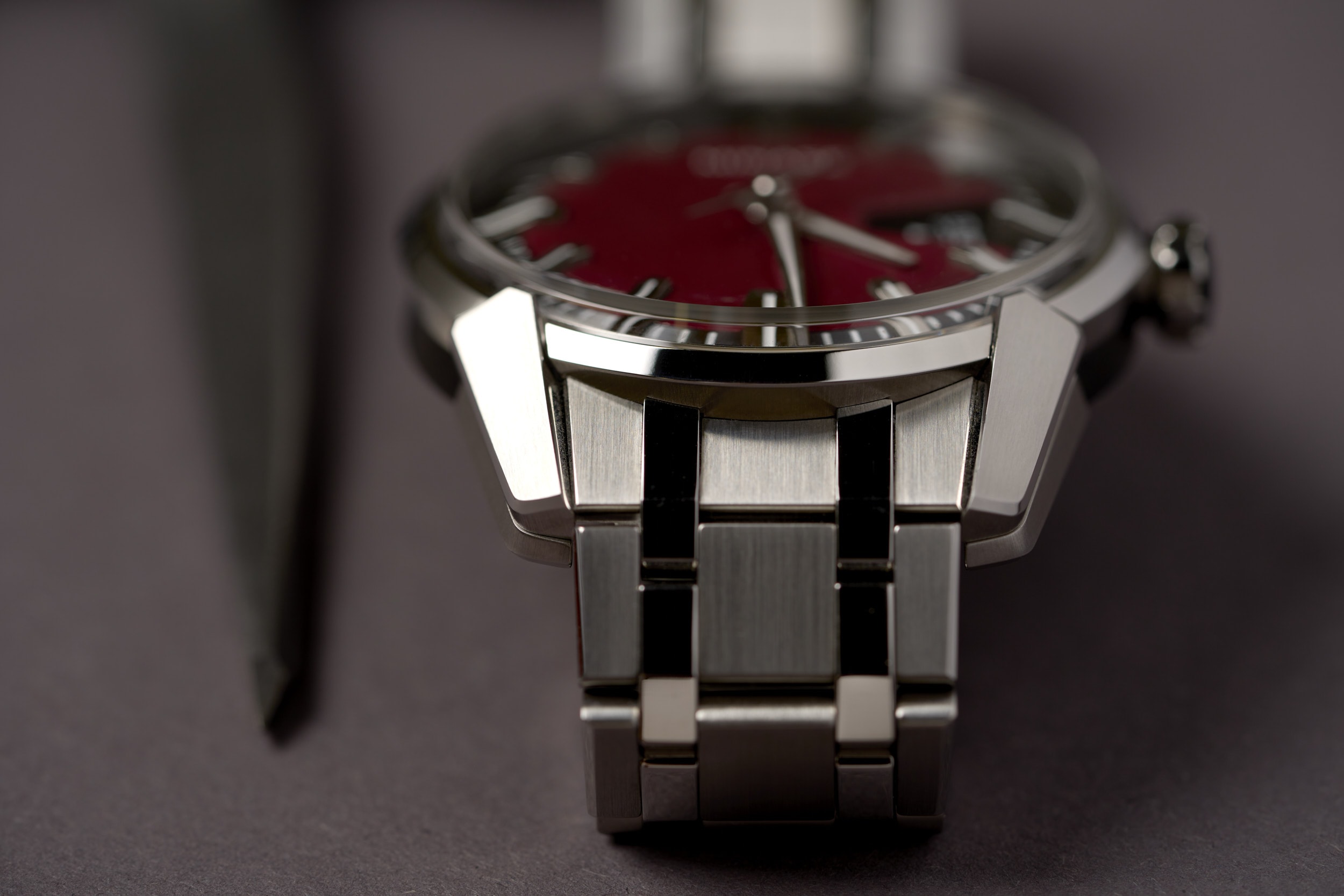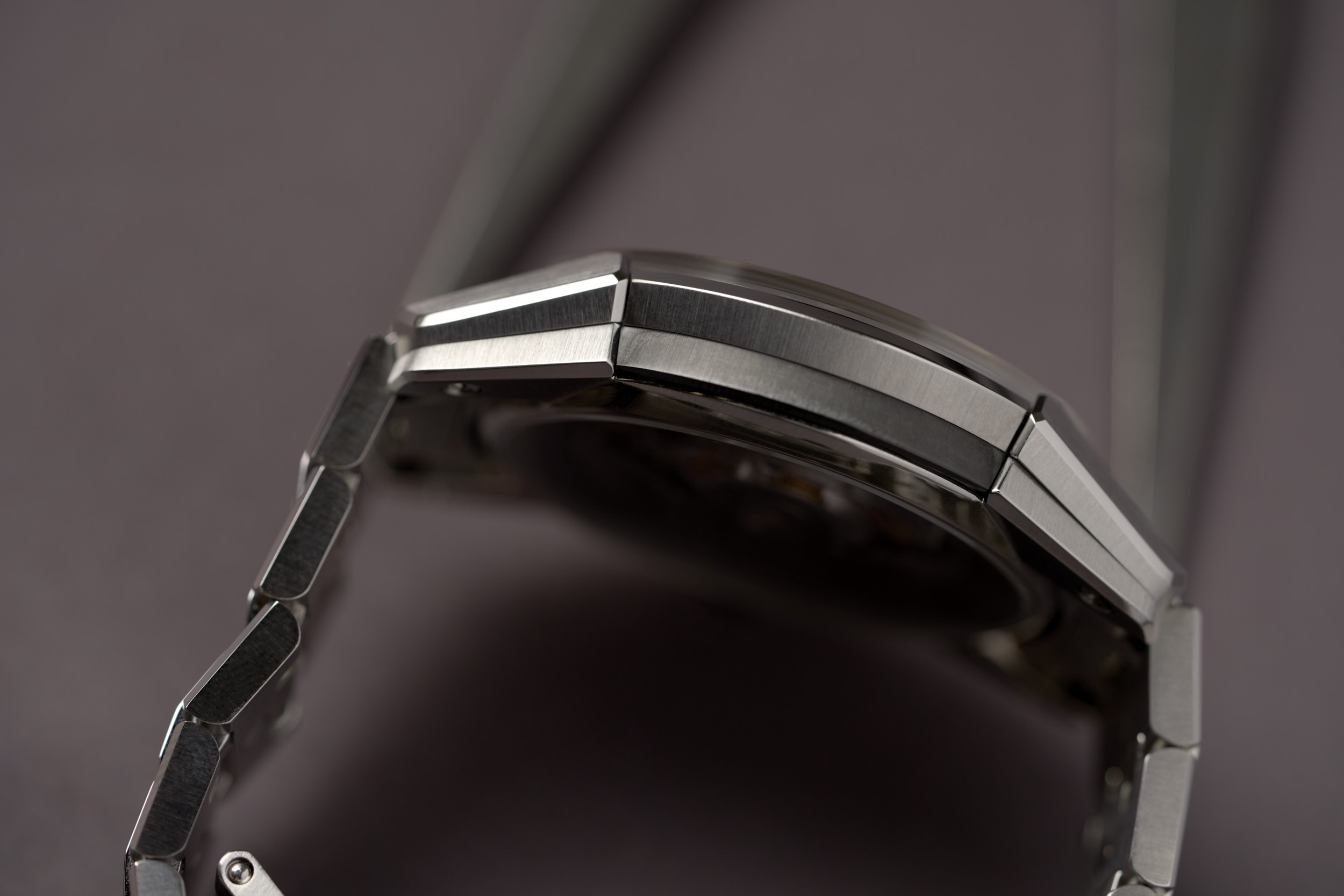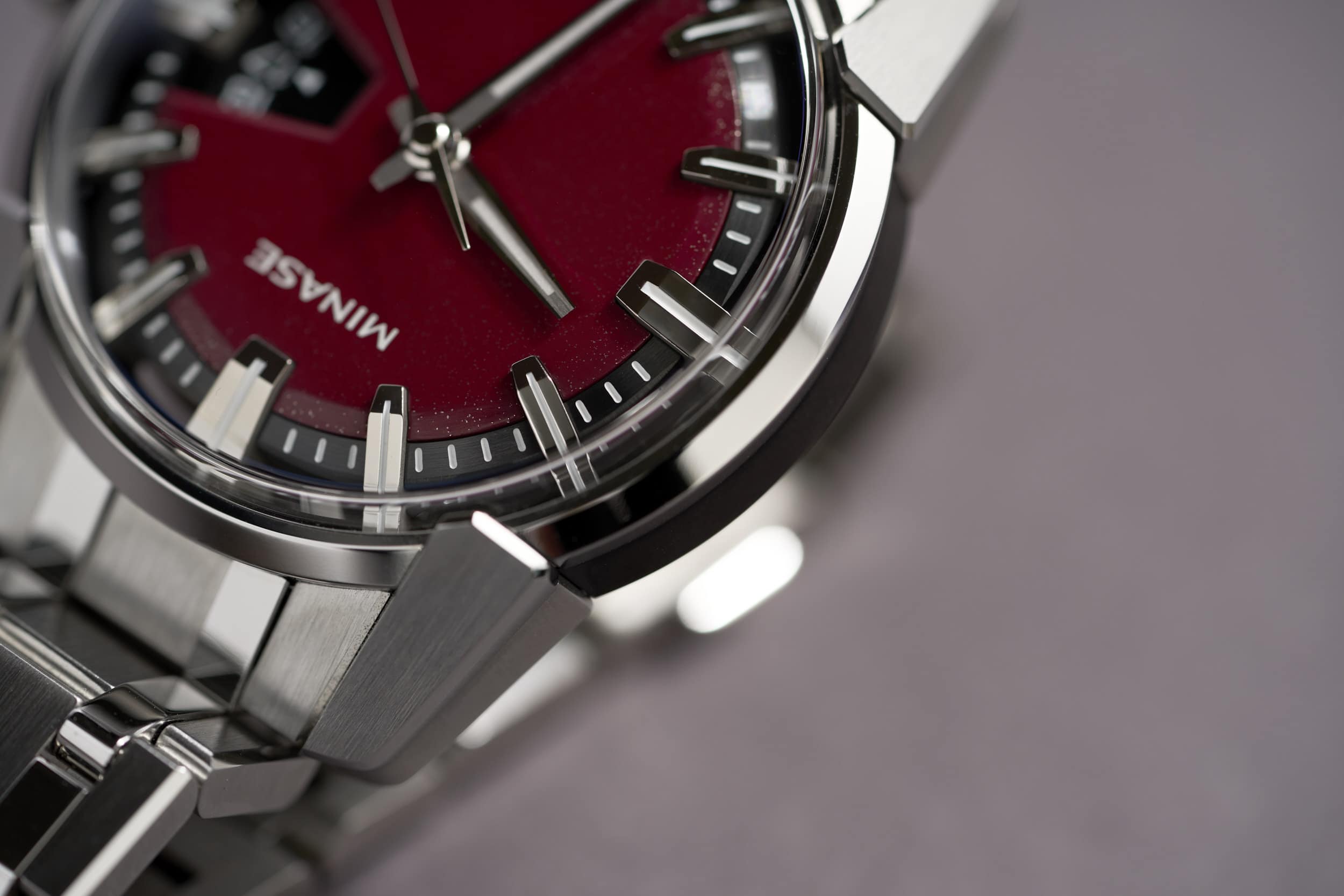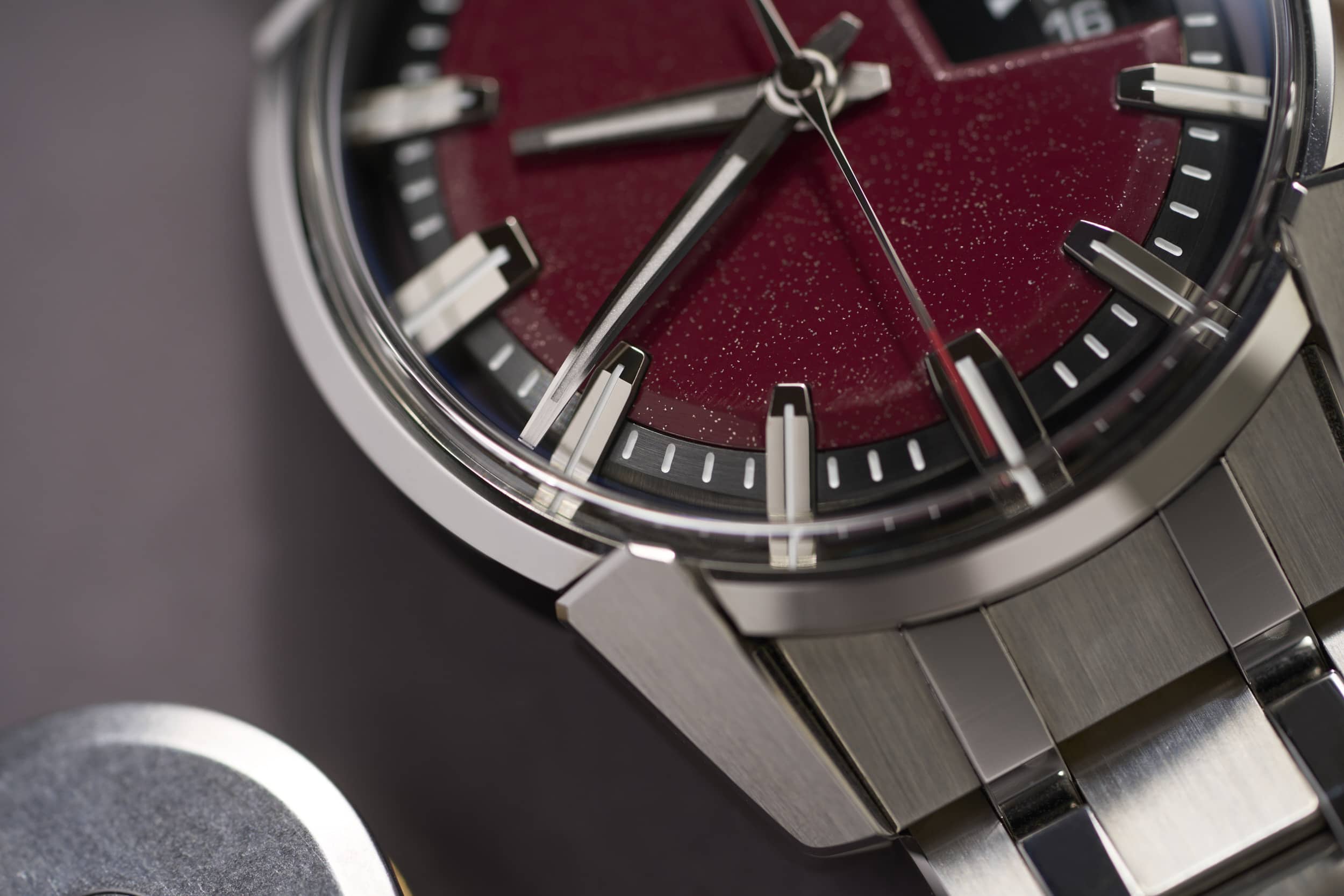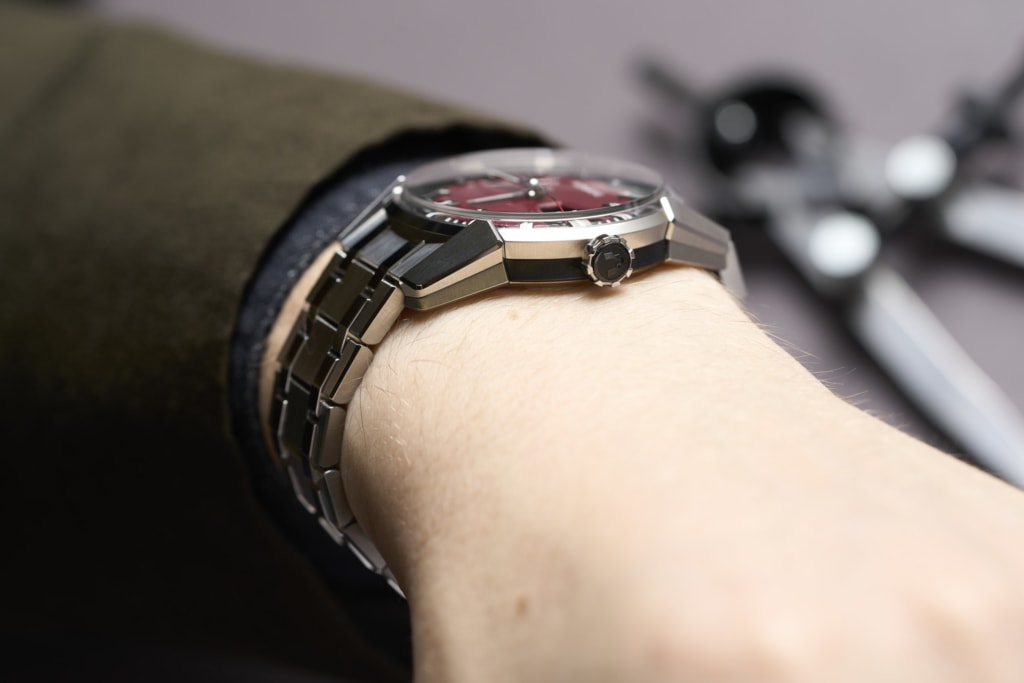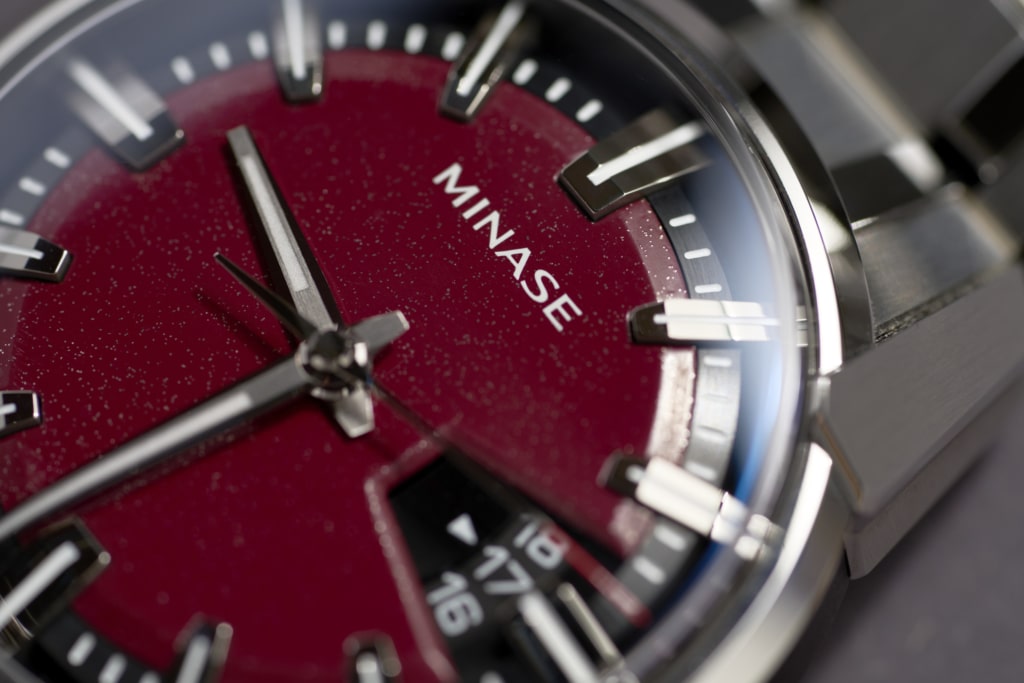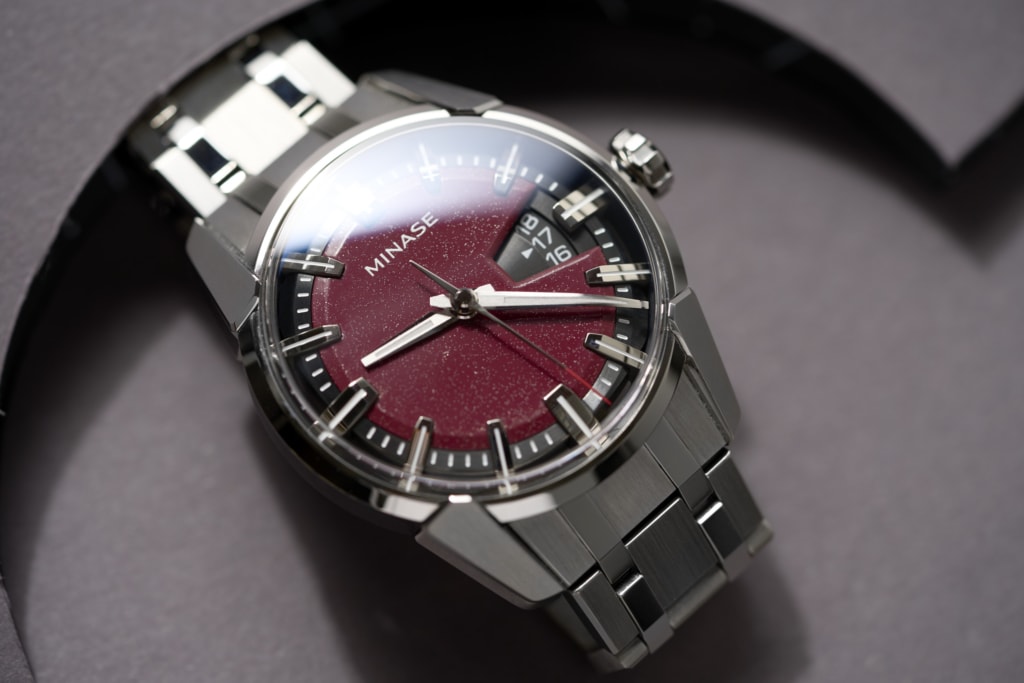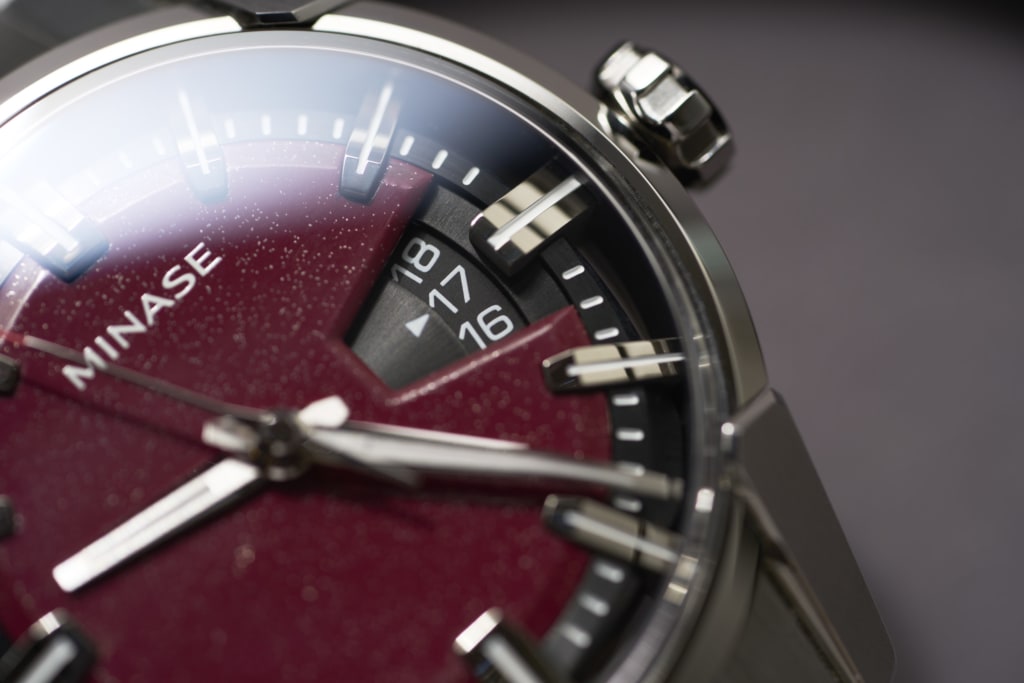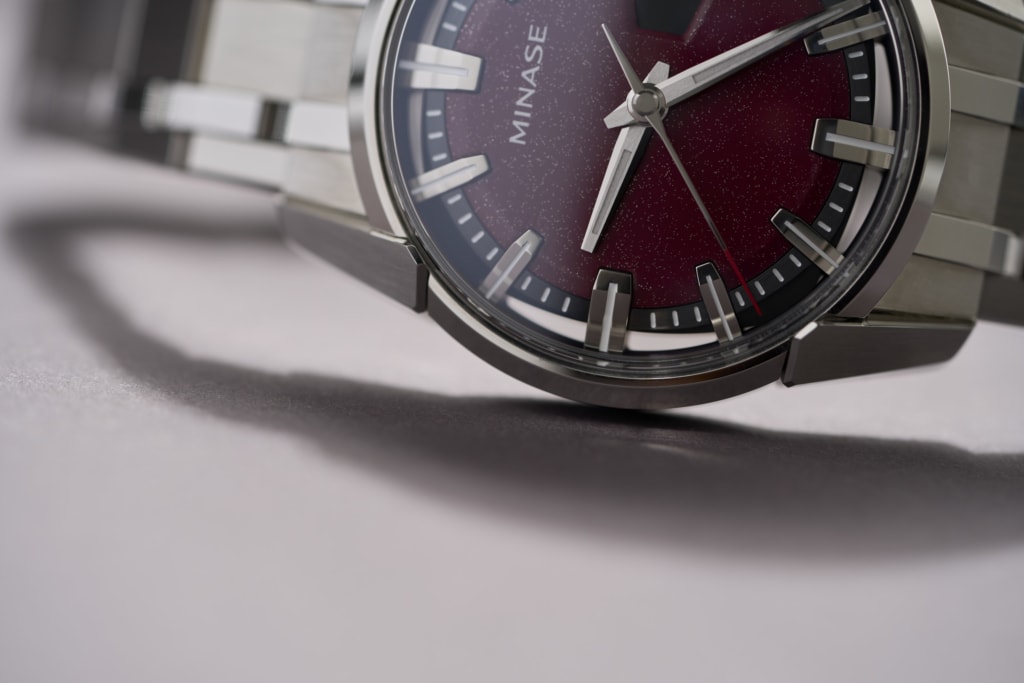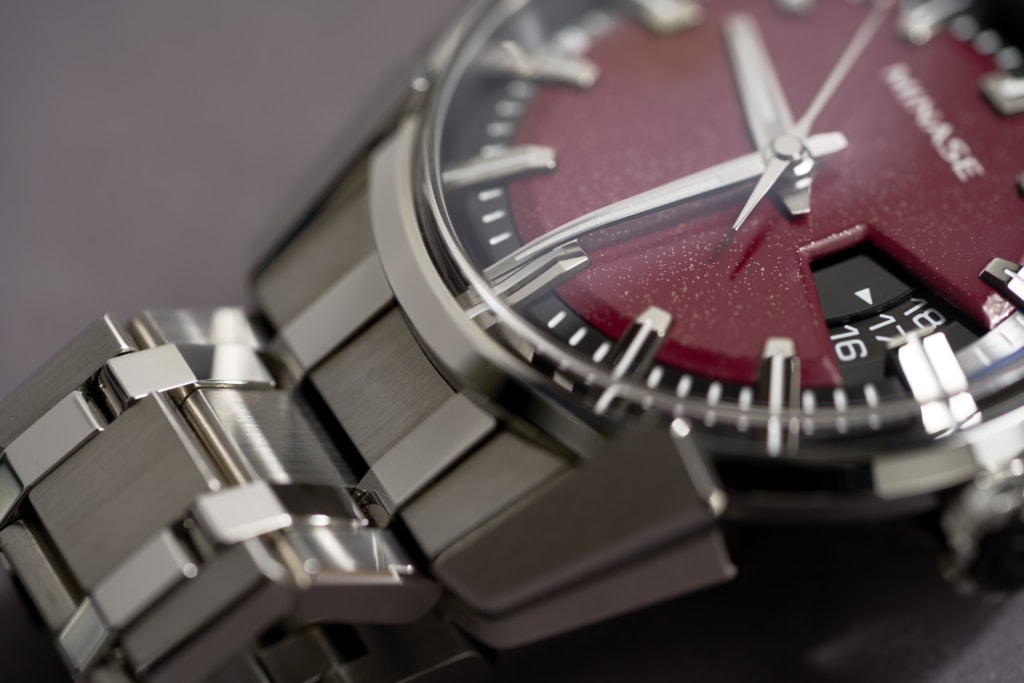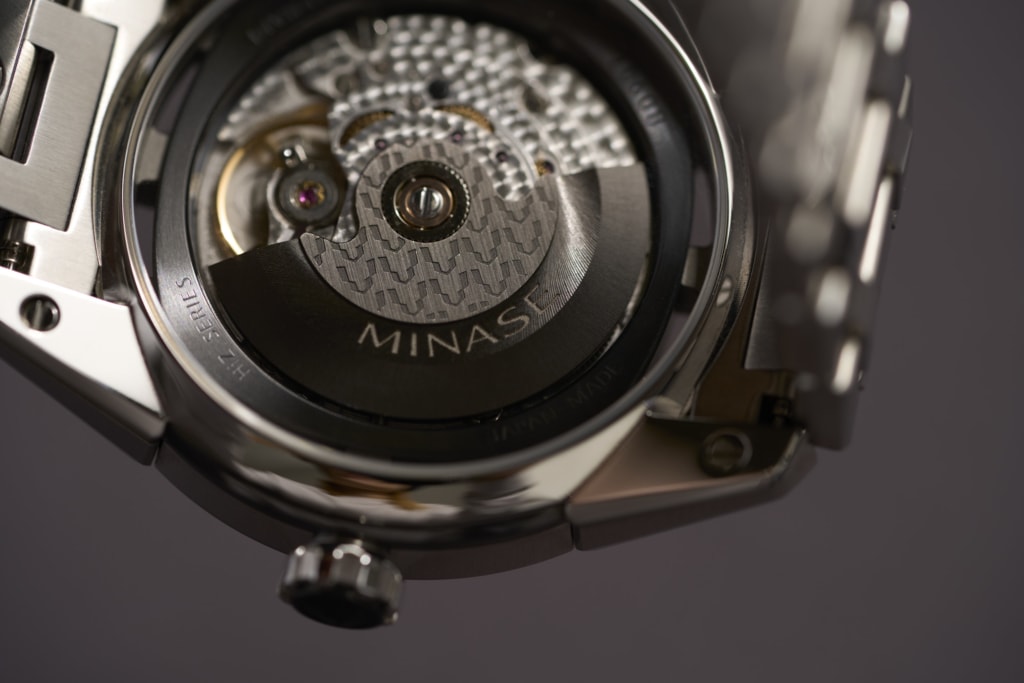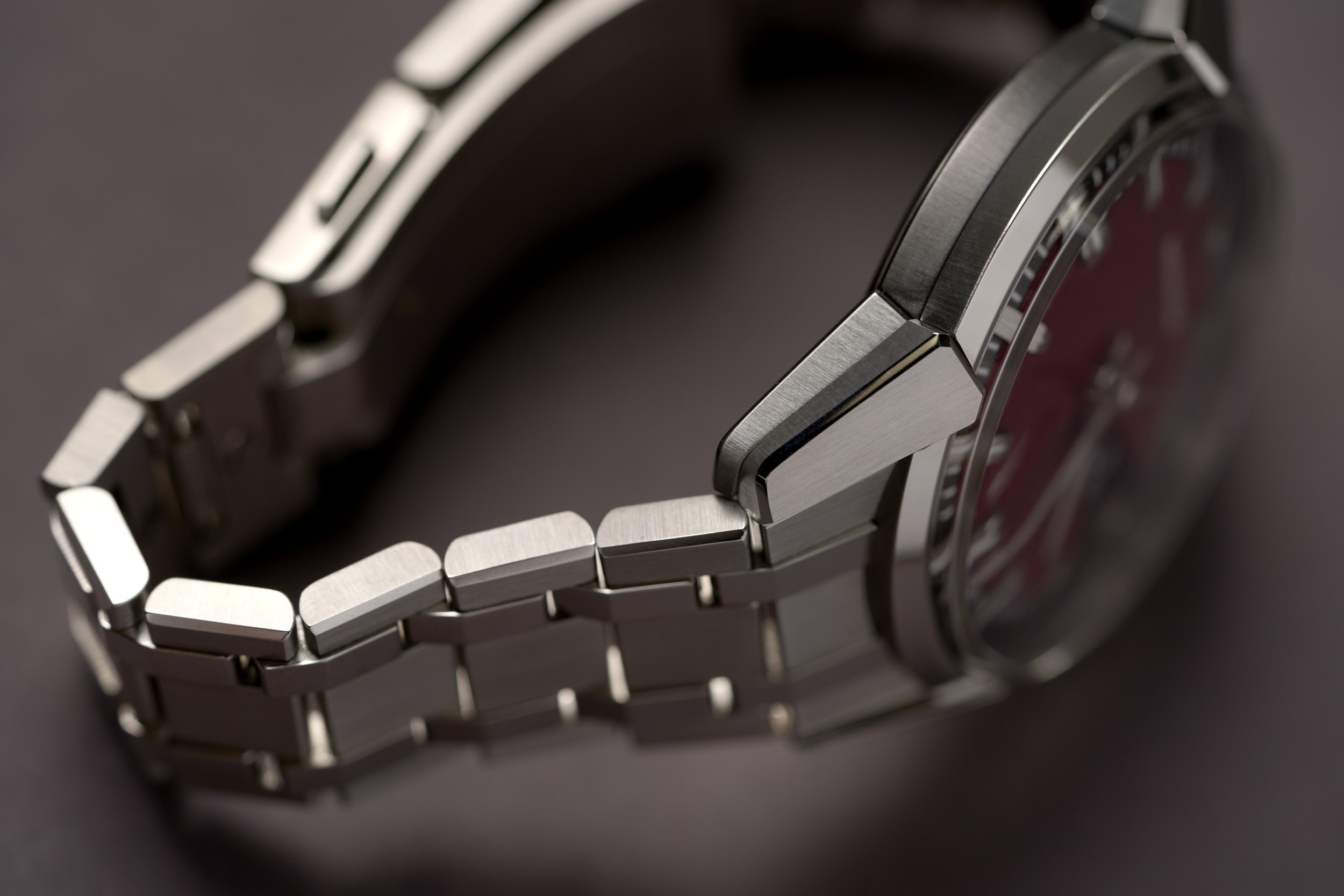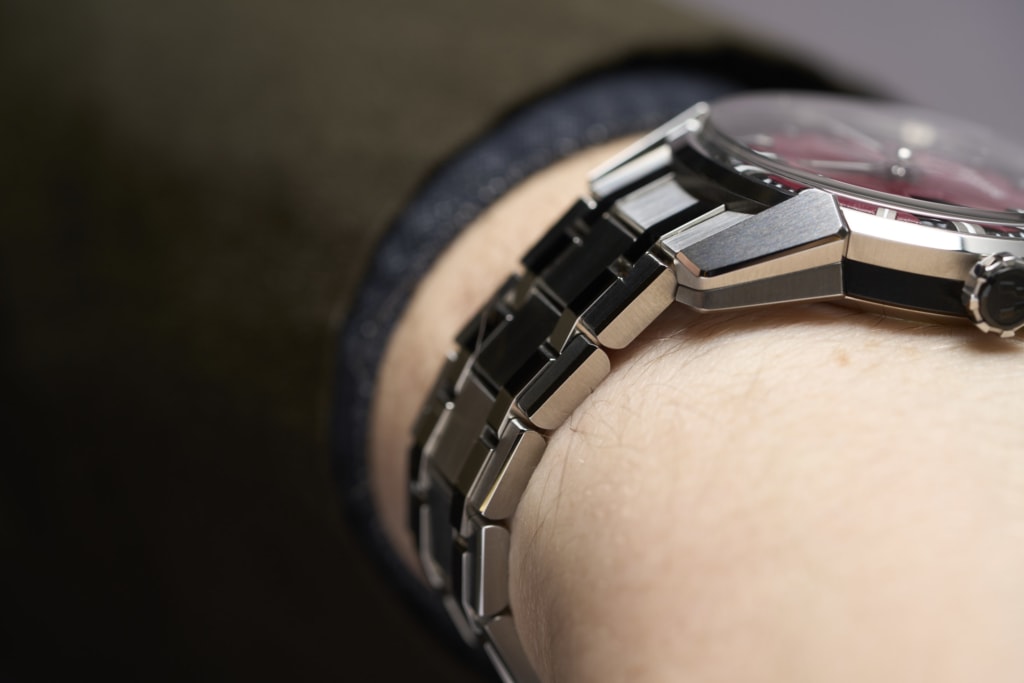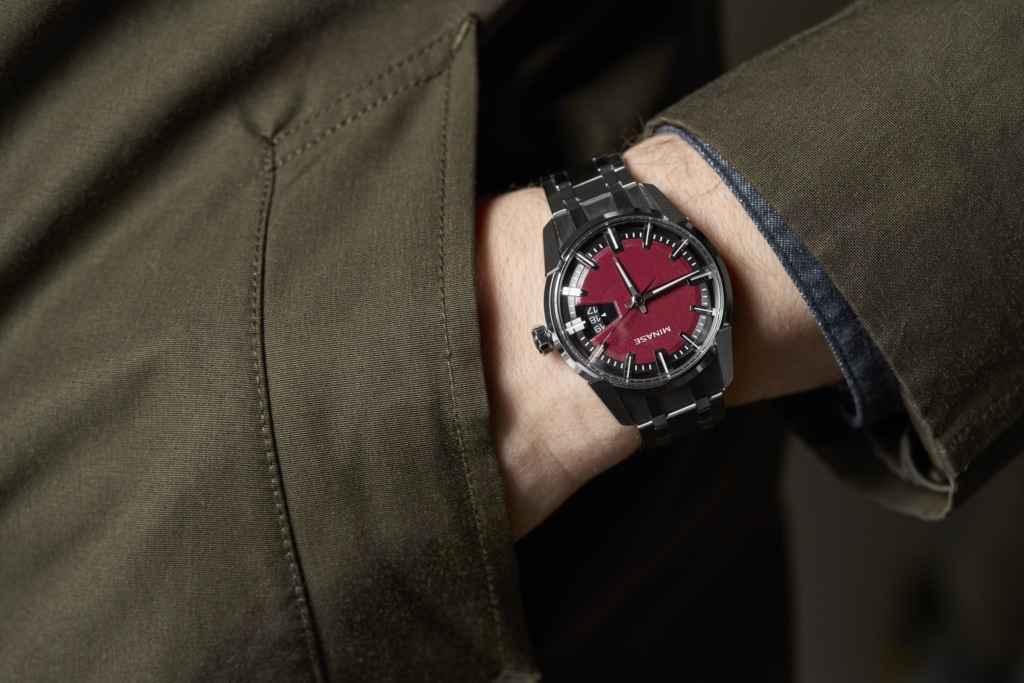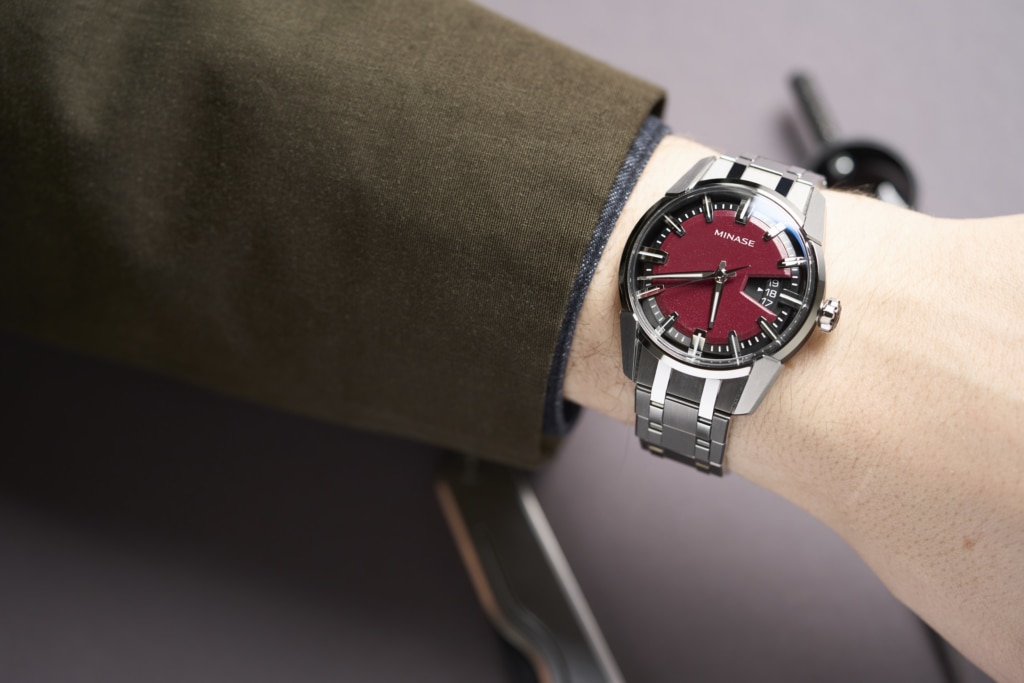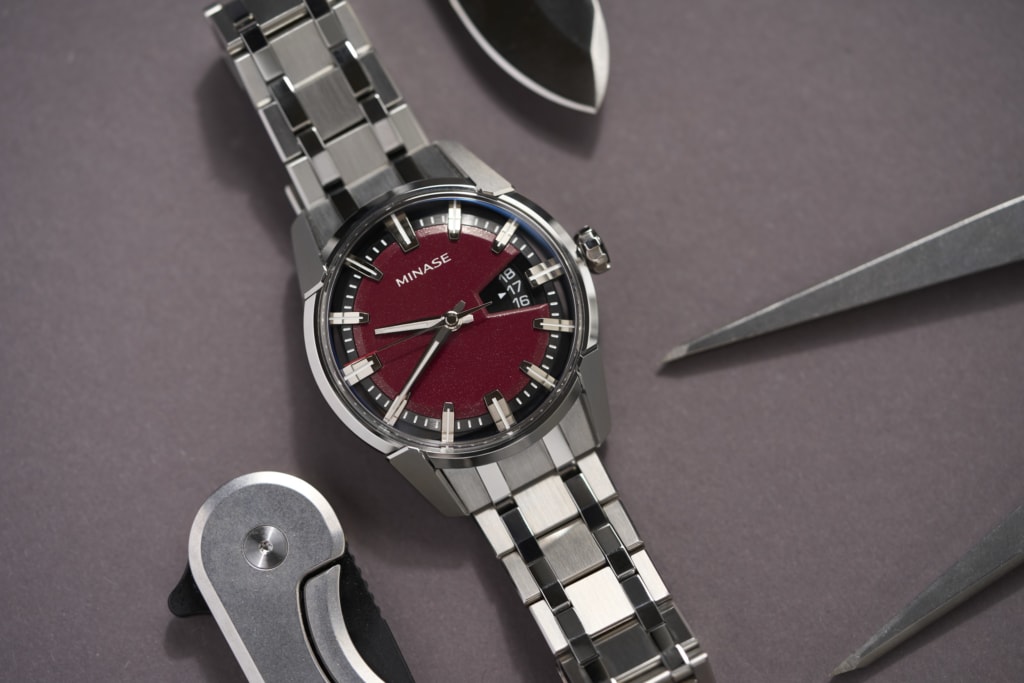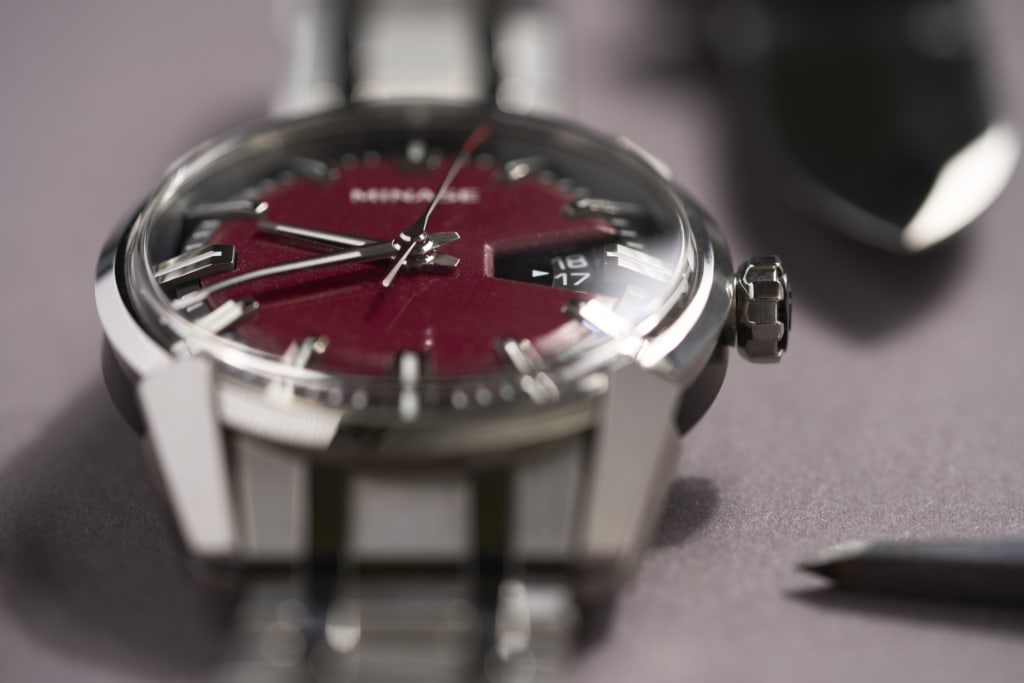We tend to think of the movement as the most complicated part of a watch, but what happens when the rest of the watch matches, or meets that complexity? We expect watches to have an immediate impact when we look at them. We hope to understand them at a glance, as their pieces fit into patterns we recognize. When something requires more time to study, to seep in, it can almost be an uncomfortable experience. It’s with this in mind, that I will begin to approach the subject of this review, the Minase Divido Urushi.
Minase’s approach to watch design is rooted in Japanese tradition, their own history with manufacturing, yet thoroughly modern, and seems to buck every trend currently guiding the market. These aren’t watches that one can fully capture in an instant – something our lifestyle of flicking through images on social media can make challenging. Inspired by Yosegi-Zaiku, traditional Japanese wood marquetry, and puzzle boxes, all components from the case to the bracelet links are deceptive, composed of several pieces where you typically find one or just a couple. But, this isn’t without purpose. Minase’s concept is fueled by the longevity of their watches, as parts down to a single lug can be replaced if necessary.
Minase is part of a larger company, called Kyowa Co., Ltd. Founded in 1963. Kyowa is a manufacturer of cutting tools, with expertise in drill bits. The Minase logo reflects this, featuring an outline of a stepped bit creating a staggered V shape. They produced tools for many industries, including watches, and evolved into creating more components including cases as a supplier for other brands. Minase was established as their own brand in 2005, utilizing the skills they acquired over decades of manufacturing. This includes Sallaz polishing, which you might know by its more common colloquial name, Zaratsu polishing.
With the conceptual stage set, the Divido is a great starting point for those unfamiliar with the brand, which included me until very recently. Meaning division in Esperanto, in some ways, it’s their most straightforward design as it’s the only one with a circular shape, letting you ease into Minase’s unique language. In others, it’s every bit as strange and wonderful as their 7 and 5 Window pieces, which look like someone took a watch and locked it in a glass box. It mixes hyper-modern aesthetics with traditional craft, and, in just about every way, is unlike any other watch I’ve reviewed.
$7200
Review (with Video): the Minase Divido Urushi
Case
Stainless Steel
Movement
KT7001/1 – SW200
Dial
Mixed Materials w/ Urushi Lacquer
Lume
On Hands
Lens
Sapphire
Strap
Steel Bracelet
Water Resistance
50M
Dimensions
40.5mm
Thickness
12.3mm
Lug Width
20mm
Crown
push-pull
Warranty
Yes
Price
$7200
Case
Don’t let the lugs deceive you, this is not your ordinary watch case. In fact, calling it a case is probably not the right move. It’s a system. A complex array of pieces that come together to contain a movement, which, by the way, appears suspended within. The pieces combine in clever ways to create a solid whole, with only four screws underneath that are hidden while worn, revealing that there is more to it than impossible milling. A quick look at the exploded diagram below reveals how the pieces fit together like a three-dimensional jigsaw puzzle. It’s actually a patented concept called MORE, Minase Original Rebuilding Equation.
The effect is one of industrial opulence. Forms collide into each other, rather than transition. Each section is an assembly unto itself. There are more surfaces and bevels visible from the top side of the watch than most watches contain in total, resulting in a showcase of finishing. Every surface is perfectly flat and either brushed with an appealing grain or mirror-polished on Sallaz machines. It’s at once harsh and architectural, yet mesmerizing and lavish.
There’s almost too much to dissect, such as the one black-plated band on the lower half of the mid-case, but in terms of what is easy to grasp, the case measures a comfortable 40.5 x 48.6 x 12.27mm, which includes a large, gorgeous box sapphire crystal with a pronounced dome. So, despite its ornate construction, it’s relatively tempered in size, especially for a watch with a truly modern aesthetic.
One of the more striking views of the watch is not from above, but actually from the side, looking right at the lugs. Here, the language of the forms becomes coherent and aggressive. Nothing is purely vertical, rather lines cut in and out, creating a crevice along the mid-band of the case. “Architectural” is likely an overly used term, but here I want to use it literally. The watch looks like a brutalist colosseum with the pincer-like-lugs acting as a gate.
Yet, despite this description that implies a foreboding scale, it also feels appealingly compact. Though there are literally open areas through the dial (more on that later), it doesn’t feel like space is wasted. Additionally, had things been smaller, the case would have appeared even more complicated. Though intense, it is balanced, in its own, weird way.
Whether or not the design is appealing is up to the individual, but I do find it has a sort of sci-fi charm. This watch feels like it belongs in the world of Blade Runner, on the wrists of the elite and cybernetically enhanced. It’s sharp, mechanical, and lacking anything organic. I found it grew on me rather than instantly clicking, but as a contrast to what I’m used to, an appealing way to put something more extravagant on my wrist.
Dial
A unique aspect of the Divido, and other Minase watches, is how the dial and movement integrate with the case. The movement holder is part of the case and is essentially a pillow-shaped capsule suspended at its corners. The dial is the top of this capsule but is also a three-dimensional construction that reaches down its sides. Since there is space left around portions of the capsule, you can see this construction. Much like the outer case, a component we take for granted as something relatively simple, made quite complex.
Looking from the top the dial appears as three distinct areas: the center, the outer ring, and the applied markers. The center area is mostly flat, save a wide bevel along its edge giving it a slight pie-pan appearance. What is most notable, however, is not the shape, but the material and color. This section is copper, coated in Urushi lacquer with a deep red tone. Derived from the sap of the Urushi tree, it is pigmented and then hand-painted onto the surface by an artisan. Before drying, a silver powder is applied in a process called Maki-e. The surface is then carefully polished, making the silver sparkle.
There are two ways to look at this surface. One is simply an aesthetic component of a gnarly watch. The largest single uninterrupted surface of the watch (ignoring the crystal), it creates a moment of reprieve from the facets, angles, and edges of the case and all of the surrounding components. It’s the eye of the storm, and it’s needed to give you a place to focus. It makes sense, then, that it would be more than just simply printed. The Urushi Maki-e is subtle, tasteful, and captivating in a way that only something created by hand can be.
The other is as a conceptual counterpoint to the rest of the design. Though inspired by traditional Japanese crafts, the resulting aesthetic of the Divido is modern and edgy (literally). The Urushi Maki-e is a traditional craft shown in a fairly literal way. It’s old-meets-new, but when other brands integrate something traditional into a watch, they tend to make the overall aesthetic more classic to meet the tradition. Here, Minase uses tradition to support a modern design.
Before moving on, it’s worth talking about what is likely to be a controversial detail that simply can’t be looked over: the date window. “Window” actually downplays the area, as it’s a solid region of the dial. The Urushi plate has a wedge cut out from 2.5 to 3.5, giving it a sort-of PACMAN silhouette. Underneath is a gloss black surface as well as an arcing date window showing the current date, and the date on either side. Additionally, there is a small arrow pointing to the center date, implying that that should be set to current.
Generally speaking, on other watches, I’ve tended not to like multi-date or altimeter style date windows. They draw too much attention to the date, and if I know the current day, I’m pretty sure I can figure out what day came before and what’s next. So, when a normal window would suffice, I don’t like them. On the Divido, a normal window wouldn’t work. It just would have looked too plain or under-designed in an environment where everything has been considered. My issue of not needing the arc is still true, but I don’t dislike, from a purely visual consideration, how it looks with the watch. It draws a lot of attention, but it somehow doesn’t feel out of place.
Moving from the outside in, the applied markers are not applied at all, but rather a claw-like structure that comes up, around the sides of the movement capsule, almost as though they are pinning the dial surface down. The markers extend across a chasm that separates the dial/movement capsule from the inner wall of the case, as though they are the points of suspension. Each marker angles away, creating more dimensionality, and features various facets and details, including a white, but not-lumed, line down their center. Nothing is simple.
Ok, well the outer ring is relatively simple by comparison. A black ring, it seperates the Urushi from the claws, and is a level down as well, adding depth. On the ring, which has a slightly brushed textured, are white marks for the minutes. Given the amount of thought put into every detail on the watch, this execution almost feels too simple, or perhaps typical, but it does provide some basic legibility. Off the wrist, the gaps between this area and the case are more visible, creating a backlit effect when held up. On, however, it’s hard to notice.
Lastly, the hour and minute hands are more towards the classic side of things, but highly detailed and executed beautifully. They both feature slender shapes that are dauphine-like, but with squared tips on either side. Both are brushed down their centers with mirror polishing along their edges, as well as lume strips. The minute hand is much longer than the hour, almost hitting the interior of the case, and is dramatically curved to match the shape of the dial. The seconds hand is thin and polished with a gently flared counterweight and a red tip. Over the central pinion is a polished cap, which I love.
The lume on the hands exists, but not much more. It’s not bright, and the lack of lume on the dial is a bit disappointing, especially considering there is white paint one expects should glow on the dial.
Movement
Inside of the Divido is the KT7001/1, which is a rebranded SW200 with heavy decoration and a customized rotor. The SW200 is an ETA 2824 clone that is Swiss-made and features 26-jewels, hacking, hand-winding, date, a power reserve of 38 hours, and a frequency of 28,800 bph. In my experience in general with SW200s as well as in the Divido, they are reliable timekeepers.
With that said, they are quite common and a bit uninteresting, especially considering the price and complexity of the Divido. At over $7,000 I generally hope I’m not also going to find the same movement in an around-$1,000 watch that is also in my box. It’s a tough position for Minase, as their options are limited. Miyota or Seiko would have the same issue, if not worse, in terms of price comparison, as would ETA. La Joux Perret and Soprod have some new and interesting SW200-esque options, but they are still a bit unproven in the market. Then there are the likes of Vaucher, Kenissi, and Schwarz Etienne, but they would definitely dramatically increase the price. Clearly, the case/dial construction and finishing account for most of the cost of the watch, so the baseline is high.
Bracelet
It should come as no surprise at this point that the bracelet that comes on the Divido is not your ordinary steel bracelet. While its looks are perhaps more normal than other components, it’s still uniquely designed, featuring a combination of unexpected facets and exceptional finishing throughout. Simply described, it’s a 5-link design with a slight taper from 20mm to 18mm. The top surfaces of the outer and inner “links” are brushed with the far sides featuring polished bevels. The thinner separating links are then fully polished, presumably on the Sallaz machine.
There are a few clever design details that go into this bracelet that, like the rest of the watch, give it that “more than meets the eye” appeal. First, the end link flares out, matching the strange interior angle of the lugs. This acute angle is created through the multi-component design of the lugs, but doesn’t actually run down the whole channel between the lugs, allowing for a classic 20mm strap to fit properly as well (yes, this is confusing). The end link matches this shape, plugging in seamlessly.
The next trick exemplifies how simplicity sometimes requires an almost shocking amount of complexity to succeed. One thing that is lacking from this bracelet is any kind of visible attachment points, including on removable links. No screw heads, no slots for a pin, just solid metal. This eliminates what could be called the least elegant aspect of bracelets (though a little hole on the side of a bracelet has never bothered me). Instead, on the interior side of each link is a wide flat-head screw. Removing that screw gives you a little more insight into the puzzle-boxes that inspired the brand’s engineering concepts as you get to solve the puzzle of putting back together.
The link comes apart into five pieces, which include a hidden pin, and a couple of pieces that fit together quite cleverly but require some attention. It took me longer than expected to size the bracelet, and luckily Blake Buettner has a drawer full of screwdrivers, as finding one that fit wasn’t easy. The real downside to this is that not everyone will have the tools and patience to do this themselves, and your local jewelry store has likely never seen anything like it before. If I were a customer, I’d probably ask for Minase to size it before sending the watch.
Once sized, and on the wrist, the bracelet makes sense with the watch, continuing the sharp look and feel around the wrist, though I had a couple of slight issues with it. First, where the bracelet connects to the thankfully small clasp creates a kink, rather than a flush continuation. This could be because of how it fit my specific wrist shape and size but regardless was a bit inelegant, especially for the price. The other is that the bracelet squeaks. Yes, you read that right. When I moved my arm around through the day, I would hear the high pitch squeal of metal rubbing against metal emanating from the general region of the watch. Not ideal.
On the Wrist
As someone who has aired on mid-century and military-style watches, the Minase Divido Urushi is a real departure. On the wrist, I can’t quite compare it to anything else, with the slight exception of Grand Seikos given the “grammar of design” and how it leads to more faceted watch cases. That said, GS’s feel far more “classic” than the Divido, so the comparison ends quickly. It’s a rigorously modern watch. None of the aesthetic cues I am used to are there. Lines don’t flow so much as collide, ending abruptly in moments of brutal contrast.
This isn’t a bad thing, but it is unsettling at first. While I typically see watches as divers, chronos, dress, etc… the Divido is another category. It’s sci-fi Gothic, or, perhaps, at the risk of sounding totally pretentious, some kind of neo-traditional. The slab of beautifully handcrafted red Urushi at the center, preserved in a seemingly hostile environment like a specimen from another world, highlights this as almost the very definition of anachronism. Yet, both have their roots in the traditional craftsmanship of the locale from which the watch was made.
To put this in more pragmatic terms: it’s weird but I like it. There’s never a dull moment, from the way light bounces off of the near uncountable surfaces to the contrast between the brushed and polished surfaces, to the depth of the dial construction. It’s handsome, if severe, and exudes a level of quality that only a luxury watch can obtain. The fact that there are so many components, so many moments of finishing that each required a hand somewhere to facilitate, makes it all the more impressive.
And, conveniently, it’s also quite comfortable, which might be surprising given its looks. The harshness is limited to its aesthetics as every surface against your skin is flat and dull (as opposed to sharp, not boring). At 40.5mm it’s a comfortable medium size, and the 48.6mm lug-to-lug length is mitigated by a generous downward angle. It’s also only as thick as it needs to be. Without the crystal, it would actually feel thin, but I think the added height is needed to balance all of the lines and angles. Regardless, it rides low.
Conclusion
I’m lucky. I know this. I get to spend time with a watch like the Minase Divido Urushi without buying it. I get to taste the lifestyle of owning it without risk. Hopefully, through my thoughts and feelings, you can get enough of a sense of what wearing it would be like to decide if it’s for you, as you likely won’t get the luxury of an extended trying-out period. This is especially important with the Divido as it’s a watch that takes time to take in, as I’ve said a few times. Sure, there are people out there who will instantly love it for its idiosyncratic design, quality of finish, overall unique characters, and brand story, but for others, it will need to marinade.
And that’s not a negative. In fact, I’d call it a success of the brand. They are not following the trends of the day. They are not catering to social media. They are making watches the way they want to, and that’s refreshing. It might not be for everyone, but they also aren’t producing thousands of watches a year. Actually, less than 500 according to their literature. In terms of production, this puts them with high-end independents.
The elephant in the room, of course, is the price. At 6,600 CHF, or around $7,200 USD, the Divido is thoroughly in luxury territory. And, frankly, it should be. When I look at the Divido, I understand the amount of skill and labor that went into making it. The sheer amount of time it would take to machine the hidden nooks and undercut facets of the components so they will fit together seamlessly with only a few hidden screws, is likely several times what a “normal” watch would take. Add in the finishing, dial construction, etc… When you add it all up and compare it to similarly priced watches, it is a relative value.
Of course, it’s a tradeoff. You get all that, and a relatively common, if well-decorated, movement. A logical brand to compare to is, again, Grand Seiko. At around $7k you’ll find watches with exceptionally finished cases in steel or titanium, but with far less complexity in terms of the sheer quantity of surfaces and components. Dials might feature a unique and attractive surface texture, created through stamping, but nothing hand-made, like the Urushi component of the Divido. But, inside you’ll find either a hi-beat mechanical or hyper-accurate Spring Drive, as well as GMT versions of both.
Both make sense, you just have to choose which aspect is more important to you. If Minase went in-house or used a higher-end Swiss movement, the price would go up accordingly. While these watches would still be special at 10, 15, maybe even 20k, they would just be for a different customer. As is, they are offering something you can’t find anywhere else, at a price with logic to it.
And, they have other options as well. First off, there is a rubber strap that knocks 1,100 CHF off the tag. It’s custom-molded and brings out a sportier aspect of the design. And there are versions of the Divido that don’t feature the Urushi Maki-e dial, rather a dramatic texture and degradé coloration that perhaps suits the modernity of the case more closely, which start at 4,300 CHF. Not inexpensive either, but the value goes up significantly.
The watch world is a funny place these days. Brands that used to be appreciated only by insiders and enthusiasts are now unobtainable, sold out in a flash or through inconvenient ordering windows and processes. At the same time, household luxury names can only be had through long waitlists or shady second-hand dealers. For someone who just wants something cool and unique, the options can feel limited. Yet, for those willing to dig, there are still treasures to be had and Minase is one of them, at least until the eye of the zeitgeist turns their way. Minase
Images from this post:
The post Review (with Video): the Minase Divido Urushi appeared first on Worn & Wound.
Read more: wornandwound.com
